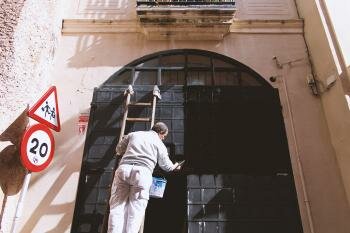WHO Reports on Lead Poisoning Prevention Week
By IISD’s SDG Knowledge Hub , June 23, 2020
The World Health Organization (WHO) has published a report summarizing activities and events that took place around the world as part of 2019 International Lead Poisoning Prevention Week (ILPPW).
The seventh edition of the ILPPW, held from 20-26 October 2019, raised awareness and promoted actions to address the human health effects of lead exposure, especially in children. It sought to urge governments without legal limits on lead in paint to establish and implement limits, building on the Model Law and Guidance for Regulating Lead Paint, which helps countries develop their own legally binding controls.
ILPPW 7 also urged industry in countries where legal limits are not yet in place to voluntarily stop the manufacture, import, and sale of paint with lead, and civil society to engage with governments and industry to support the development and implementation of legislation. The week also focused on the Strategic Approach for International Chemicals Management (SAICM)-Global Environment Facility (GEF) project to increase the number of countries phasing out lead paint.
The ILPPW was organized by the UN Environment Programme (UNEP) and the World Health Organization (WHO) through the Global Alliance to Eliminate Lead Paint (Lead Paint Alliance), a voluntary initiative to catalyze efforts to achieve international goals to prevent children’s exposure to lead from paint and to minimize occupational exposures to lead paint.
Eighty-nine events were registered on the WHO website for the ILPPW by governments, NGOs, the paint industry, academia, and other event organizers. Events took place in Bangladesh, Georgia, Jamaica, Jordan, Kenya, and Panama, among others.
The WHO report on the Week describes demonstrations calling for action on lead paint, stakeholder meetings, educational activities in schools, social media communications, television and radio broadcasts, information stands in public areas, and calls for legislative action.
The Lead Paint Alliance provided a campaign resource package focused on: increased awareness on risk and hazards of lead and lead paint; raising awareness and promoting action to prevent lead poisoning, particularly in children; and banning lead paint by working with national governments and stakeholders to establish laws to eliminate lead paint, and to ensure effective enforcement of lead paint regulations. Other resources include: a fact sheet that outlines steps to help countries adopt laws, an annual report describing the status of lead paint laws in countries as of September 2019, and an interactive map and database that provides information on the status of lead paint laws in countries, including regulations and controls.
SDG Knowledge Hub coverage of chemicals of concern related to the SAICM/GEF project, including efforts to eliminate lead in paint, can be found here. [WHO Webpage Outlining Campaign Objectives]


